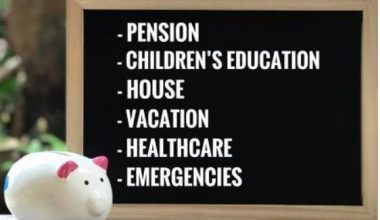During the quarter ended September 2022, 361 projects involving an investment of Rs.1.14 trillion were completed. This estimate is based on information available till the end of September. As more information of completions flow in regarding the quarter, this estimate is expected to increase possibly to around Rs.1.5 trillion.
During the quarter ended June 2022, 526 projects with a total investment of Rs.1.20 trillion were completed. Even this estimate could go up marginally over the next few months.
The total completion of investment projects during the first half of 2022-23 thus works out to Rs.2.34 trillion with a possibility of this estimate rising eventually to around Rs.2.75 trillion. This is underwhelming.
The expectation has been that 2022-23 would see completion of a large number of projects. Completions were expected to rise much above the Rs.6 trillion worth of completions typically seen in a year. Project implementation had slowed down in the preceding two years that were impacted by the multiple waves of Covid-19 infections and by the consequent lockdowns. These disruptions are now well behind us and so there has been an expectation of an increase in project completions.
But, after six months into the year, we find that project completions continue to remain sluggish. For example, two large projects that were expected to be completed by March 2022 the Rs.83 billion Andhra Pradesh Power Development Corporations’ Sri Damodaram Sanjeevaiah thermal power plant expansion and Apollo Tyres’ Rs.40 billion Chittoor plant to manufacture tyres are still not commissioned.
Projects worth nearly Rs.10 trillion were expected to be completed during 2022-23. This estimate now warrants a revision.
The lack of momentum in project implementation during the first half of 2022-23 seems to suggest that enterprises are still reticent to create new capacities. This is also seen in the nature of completions seen in recent times. Over 57 percent of the completions in the quarter ended September 2022 are in the area of transport infrastructure essentially roads and railways in that order and to a much smaller extent seaports and airports. This ratio was 56 percent in the quarter ended March 2022 as well. In four of the last eight quarters, the share of transport infrastructure has accounted for about 57 percent or more of total completions.
While the creation of transport infrastructure is welcome, it is neither an end in itself nor is it adequate to spur growth. It needs to lead to the addition of other capacities, particularly in the manufacturing sector to see sustained growth and employment. However, the share of manufacturing projects in completions has been low at around 15 percent. This share is also falling.
Much of the expected rise in completion of projects in 2022-23 is because of residential apartment projects registered with RERA that have completion dates in the year. 211 residential projects worth Rs.147 billion were completed during the first half of the year. Another 877 projects worth Rs.1,930 billion are scheduled to be completed during the second half of the year. We believe that only 40 percent of these (projects worth Rs.733 billion) would be completed. Yet, they would account for a substantial 12.6 percent of all completions during the year. In comparison, roads would account for 22.9 percent of total completions.
If these expectations turn out to be true then our revised expectation is of projects worth Rs.7 trillion being completed during 2022-23. This is much lower than our earlier expectation of Rs.10 trillion. But, it would still be higher than the Rs.6 trillion worth of completions recorded in 2021-22 or the previous high of Rs.6.53 trillion recorded in 2016-17.
Project completions have stagnated over the past seven years or so at around Rs.6 trillion per annum. If we exclude the pandemic year of 2020-21, then the average completion per year between 2015-16 and 2021-22 is Rs.5.8 trillion with a range of Rs.4.8-6.5 trillion without a trend in either direction. At the same time, addition to the stock of outstanding projects has also slowed down. This is because additions of proposals to create new capacities have also slowed down.
In spite of this slowing down of the growth in outstanding projects, the rate of completion defined as the percent of outstanding projects that get commissioned in a unit of time has been falling.
Less than one percent of the outstanding projects get commissioned during a quarter. This ratio has been declining very gradually over the long period. A combination of low growth in stock of investment projects and a low conversion rate into actual new capacities indicate a fatigue of sorts in new capacity creation in India.
Unlike in the past, projects are not being abandoned or shelved in large or increasing numbers. Nor are reports of their implementation being stalled are rising. The share of outstanding projects that are stalled has remained stable at about 6 percent since 2019. It spiked to over 10 percent during the lockdown but that was momentary.
While there is no increase in promoters acknowledging projects being stalled, shelved or abandoned, there is a rise in the projects that do not provide any updates on their progress or status. Silences are increasing. If on a sustained basis, no information is available for a project for long time, it is dropped from being counted as an outstanding project, according to CMIE’s CapEx database. There is an increase in the attrition of projects for this reason.
During the first three quarters of 2022, on an average 1.7 percent outstanding projects in value terms, were dropped because of lack of information on a sustained basis. Earlier, before the pandemic, during 2013-2019, on an average 1.1 percent of the value of outstanding projects were dropped for similar reasons. This increase in sustained silence is partly a reflection of the poor quality of new project announcements in recent times.
The author is MD and CEO of Centre for Monitoring Indian Economy Pvt. Ltd.







